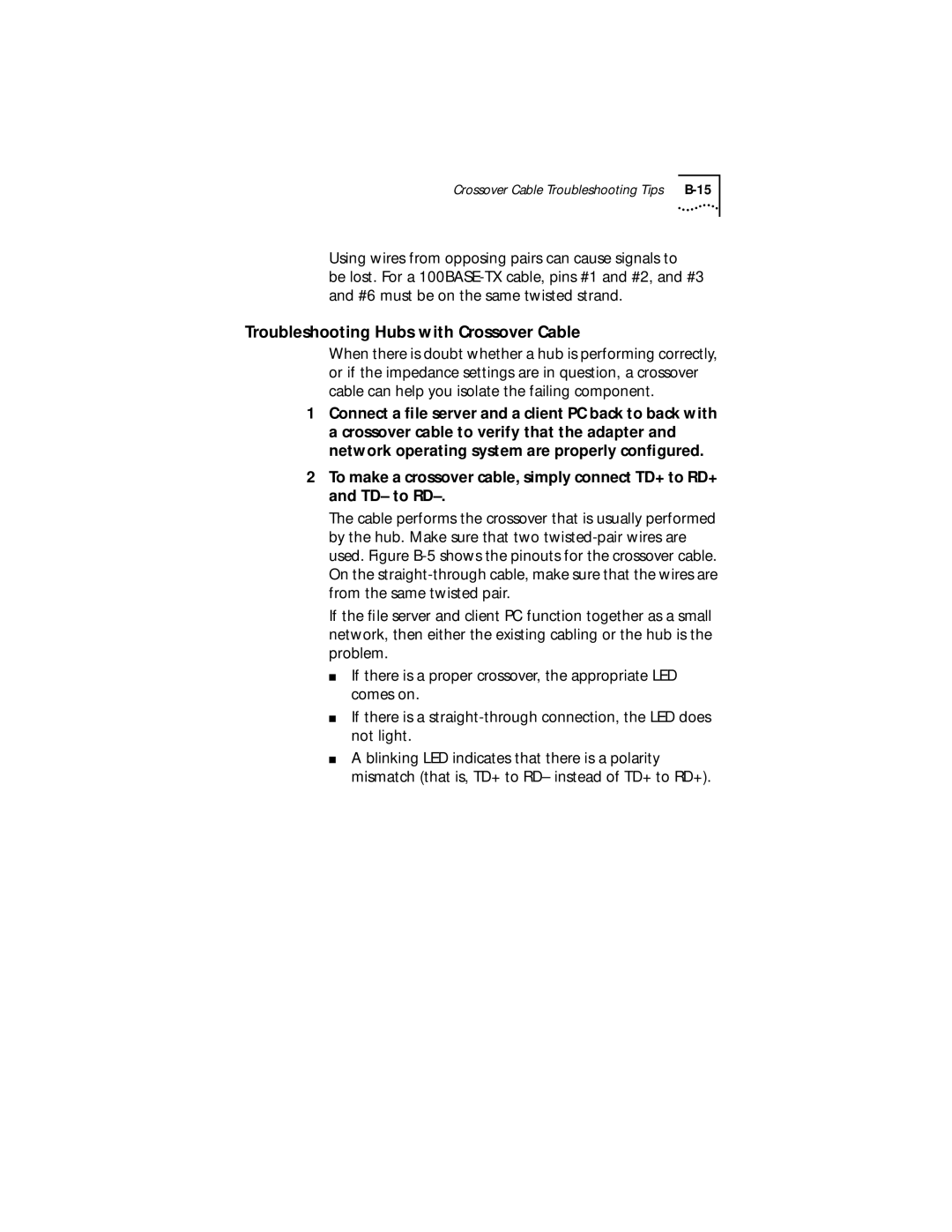Crossover Cable Troubleshooting Tips |
Using wires from opposing pairs can cause signals to
be lost. For a
Troubleshooting Hubs with Crossover Cable
When there is doubt whether a hub is performing correctly, or if the impedance settings are in question, a crossover cable can help you isolate the failing component.
1Connect a file server and a client PC back to back with a crossover cable to verify that the adapter and network operating system are properly configured.
2To make a crossover cable, simply connect TD+ to RD+ and TD– to
The cable performs the crossover that is usually performed by the hub. Make sure that two
If the file server and client PC function together as a small network, then either the existing cabling or the hub is the problem.
■If there is a proper crossover, the appropriate LED comes on.
■If there is a
■A blinking LED indicates that there is a polarity mismatch (that is, TD+ to RD– instead of TD+ to RD+).
